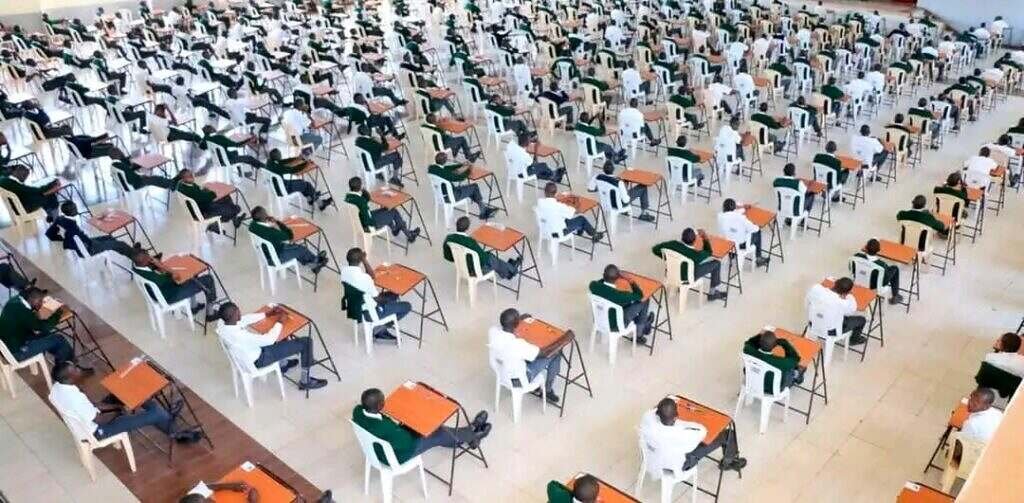
Education is often regarded as the cornerstone of national development, and in Kenya, the KCSE (Kenya Certificate of Secondary Education) examination serves as a critical milestone for students transitioning to higher education and professional careers. Each year, the KCSE results provide a snapshot of the state of Kenya’s secondary education system, highlighting areas of success and those requiring urgent attention.
The recently released 2024 KCSE results by the Kenya National Examinations Council (KNEC) have brought to light not only the academic achievements of students but also significant disparities in performance across various school categories. These results reveal how the type of school attended—whether national, sub-county, private, or extra county—impacts students’ chances of excelling academically.
As expected, national schools continue to dominate in producing top-performing students, while sub-county schools, which serve the majority of learners, face the challenge of high concentrations of low grades. Meanwhile, private schools and extra county schools occupy an intermediate space, reflecting a wide spectrum of performance outcomes based on resources, governance, and infrastructure.
This blog post delves into the KCSE 2024 results, examining the representation of examination centers by school type and the grade distribution across these categories. By unpacking this data, we aim to understand the factors contributing to these disparities and explore potential solutions to create a more equitable education system for all Kenyan students.
Examination Centers by School Type
The KCSE examination centers for 2024 are distributed among four main school categories. Here’s a closer look at how each type is represented:
- National Schools (13.7%)
National schools are widely recognized for their rigorous academic standards and prestigious reputations. These institutions, which represent 13.7% of all examination centers, attract the top-performing students during the Form One selection process. With access to exceptional resources, experienced teachers, and well-structured learning environments, national schools are poised to deliver high academic achievements year after year. - Sub-county Schools (66.9%)
Sub-county schools form the backbone of Kenya’s secondary education system, accounting for a significant 66.9% of all examination centers. These schools cater primarily to students from local communities, often in rural or underprivileged areas. Despite their numbers, many sub-county schools face challenges such as limited resources, overcrowded classrooms, and insufficient infrastructure, which impact student performance. - Private Schools (11.8%)
Private schools represent 11.8% of the examination centers. These institutions operate on a wide spectrum, ranging from elite academies with excellent resources to smaller schools catering to low-income families. The performance of private schools often depends on factors such as governance, fee structures, and access to learning materials. - Extra County Schools (7.6%)
Extra county schools account for 7.6% of the examination centers. These institutions, which admit students from across multiple counties, offer an educational experience that falls between that of national and sub-county schools. While some extra county schools boast strong academic programs, others face challenges similar to those of sub-county schools.
Grade Distribution by School Category
The 2024 KCSE results reveal stark contrasts in academic performance across the four school categories, particularly when comparing top grades (A) and the lowest grades (D and E).
- Candidates with A Grades
An impressive 81.2% of candidates who scored A grades came from national schools. This highlights the continued dominance of national schools in producing the country’s academic elite. The competitive selection process, combined with superior resources and highly skilled educators, creates an environment where students can thrive and excel. - Candidates with D and E Grades
On the opposite end of the spectrum, 83.52% of candidates who scored D and E grades were from sub-county schools. These results reflect the significant challenges faced by sub-county schools, including inadequate teacher training, lack of facilities, and socioeconomic factors that affect student learning outcomes.
Key Insights
The 2024 KCSE results paint a clear picture of disparities within Kenya’s education system. Key takeaways include:
- Performance Gaps: National schools continue to outshine other categories, producing the majority of A-grade candidates, while sub-county schools struggle with a disproportionate number of low-performing students.
- Resource Inequality: The performance gap underscores the stark differences in resource allocation, teacher quality, and infrastructure between school categories.
- Private and Extra County Schools: These schools show varied performance levels, depending on their resources, governance, and regional factors.
Implications for Policy and Education
The disparities highlighted by the 2024 KCSE results call for immediate action to address inequality in Kenya’s education system. Policymakers, educators, and stakeholders must collaborate to ensure that all students, regardless of their school type, have an equal opportunity to succeed.
- Investing in Sub-county Schools
Sub-county schools, which cater to the majority of students, require targeted interventions to improve infrastructure, provide adequate learning materials, and train teachers to meet modern standards. - Expanding Access to Resources
Extra county and sub-county schools need increased government funding and support to ensure that talented students in these institutions can compete on an equal footing with their peers in national schools. - Monitoring Private Schools
Private schools must be held to consistent quality standards to ensure that all students in this category receive a high-quality education, irrespective of socioeconomic background.
Conclusion
The 2024 KCSE results provide valuable insights into the strengths and weaknesses of Kenya’s secondary education system. While national schools continue to dominate in academic excellence, the challenges faced by sub-county schools and other underperforming categories cannot be overlooked.
Bridging these gaps will require a concerted effort from all stakeholders, including policymakers, school administrators, and the wider community. By addressing the disparities in resource allocation and ensuring equitable access to quality education, Kenya can create a system where every student, regardless of their school type, has the opportunity to succeed.





